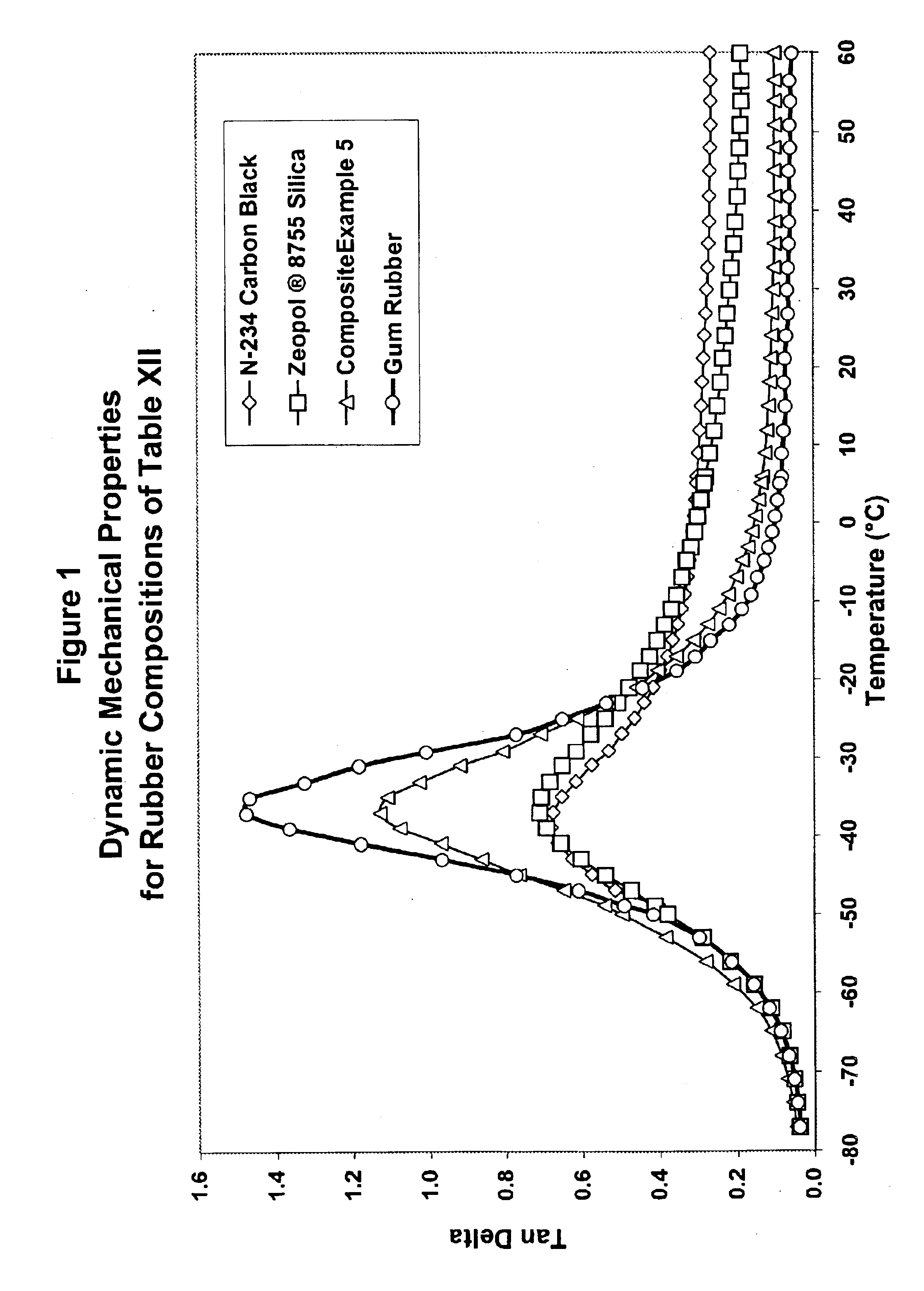Rubber composition comprising composite pigment
- Summary
- Abstract
- Description
- Claims
- Application Information
AI Technical Summary
Benefits of technology
Problems solved by technology
Method used
Image
Examples
examples 1-7
In Examples 1-7, composite pigments for use in styrene-butadiene Rubber Compositions (and other rubber and elastomer applications) as according to the present invention were prepared. The quantities and concentration of reactants and the reactant conditions for preparing the composite pigments are set forth in Table I, below.
First an aqueous solution of 1.5 wt % Na2SO4 was added to an aqueous solution of sodium silicate Na2O:SiO2 (3.3 molar ratio Na2O:SiO2) in a reactor equipped with a mechanical stirrer and a heating device (preferably steam heated). Thereafter the reactor contents was heated to an initial temperature with constant stirring at 400 rpm after which a specified amount of a dense inorganic core material was added to the reactor.
Stirring was continued for another 5 minutes to disperse the dense inorganic core material. Thereafter, a solution of H2SO4 was then added at a specified rate until pH 7.5 was reached. If a recirculation loop was used, the loop was opened and th...
example 8
Example 8 is a composite pigment, specifically a “dense phase silica” coated barium sulfate, that was prepared under somewhat different processing conditions than the composite pigments of examples 1-7, above. In this example, the silica coating is formed as a thin coating layer around the surface of barium sulfate particles. Because the coating layer is in this thin, adhering form, the overall silica / barium sulfate particle still has the same recognizable shape as that of the barium sulfate core, before the silica application. These dense phase silica coated inorganic particles have a relatively low surface area.
In this specific example the dense phase silica coated barium sulfate core was prepared by first mixing 58.5 L of water with 6.5 kg of barium sulfate (Huberbrite 1, in a 10% slurry) in an atmospheric reactor equipped with a mechanical stirrer and a heating device. The reactor was subsequently heated to 90° C. with stirring at 400 rpm. Then a solution of 11.4 wt % sulfuric a...
PUM
| Property | Measurement | Unit |
|---|---|---|
| Fraction | aaaaa | aaaaa |
| Fraction | aaaaa | aaaaa |
| Density | aaaaa | aaaaa |
Abstract
Description
Claims
Application Information
 Login to View More
Login to View More - R&D
- Intellectual Property
- Life Sciences
- Materials
- Tech Scout
- Unparalleled Data Quality
- Higher Quality Content
- 60% Fewer Hallucinations
Browse by: Latest US Patents, China's latest patents, Technical Efficacy Thesaurus, Application Domain, Technology Topic, Popular Technical Reports.
© 2025 PatSnap. All rights reserved.Legal|Privacy policy|Modern Slavery Act Transparency Statement|Sitemap|About US| Contact US: help@patsnap.com


